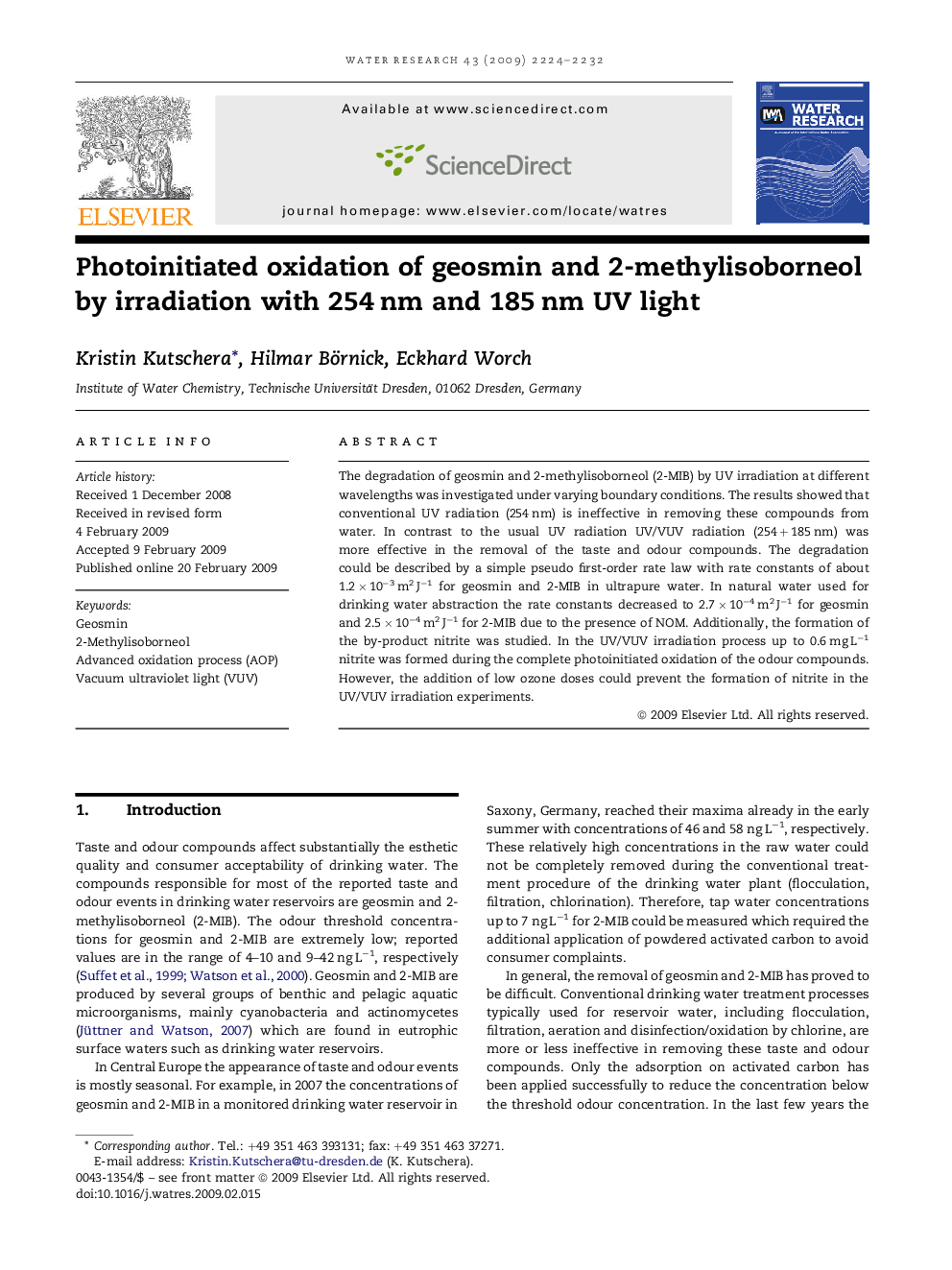| Article ID | Journal | Published Year | Pages | File Type |
|---|---|---|---|---|
| 4485009 | Water Research | 2009 | 9 Pages |
The degradation of geosmin and 2-methylisoborneol (2-MIB) by UV irradiation at different wavelengths was investigated under varying boundary conditions. The results showed that conventional UV radiation (254 nm) is ineffective in removing these compounds from water. In contrast to the usual UV radiation UV/VUV radiation (254 + 185 nm) was more effective in the removal of the taste and odour compounds. The degradation could be described by a simple pseudo first-order rate law with rate constants of about 1.2 × 10−3 m2 J−1 for geosmin and 2-MIB in ultrapure water. In natural water used for drinking water abstraction the rate constants decreased to 2.7 × 10−4 m2 J−1 for geosmin and 2.5 × 10−4 m2 J−1 for 2-MIB due to the presence of NOM. Additionally, the formation of the by-product nitrite was studied. In the UV/VUV irradiation process up to 0.6 mg L−1 nitrite was formed during the complete photoinitiated oxidation of the odour compounds. However, the addition of low ozone doses could prevent the formation of nitrite in the UV/VUV irradiation experiments.
